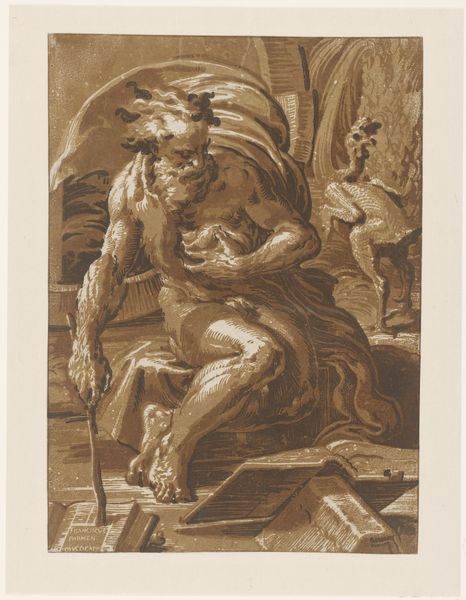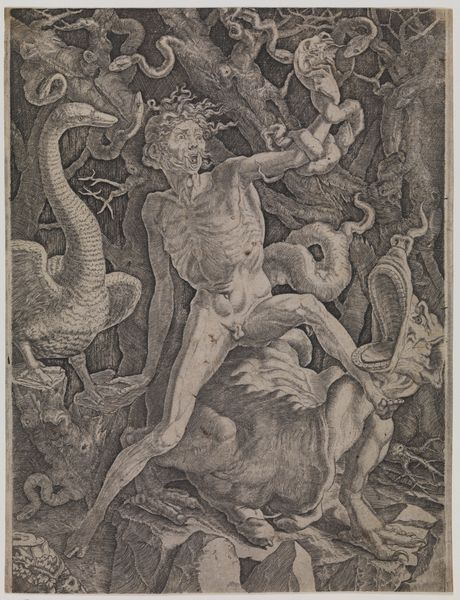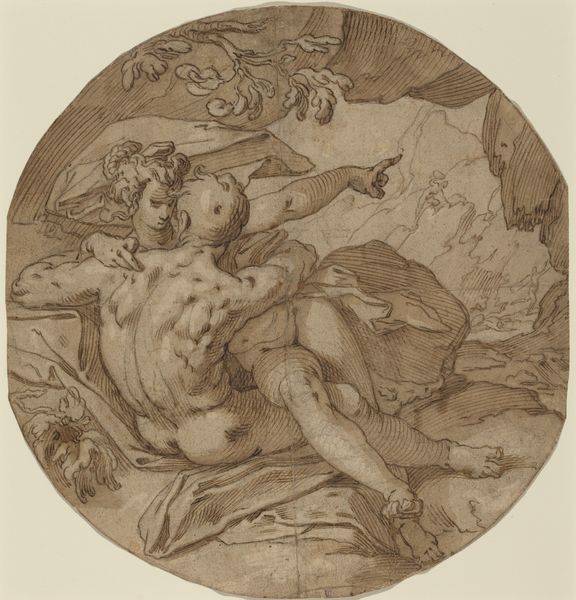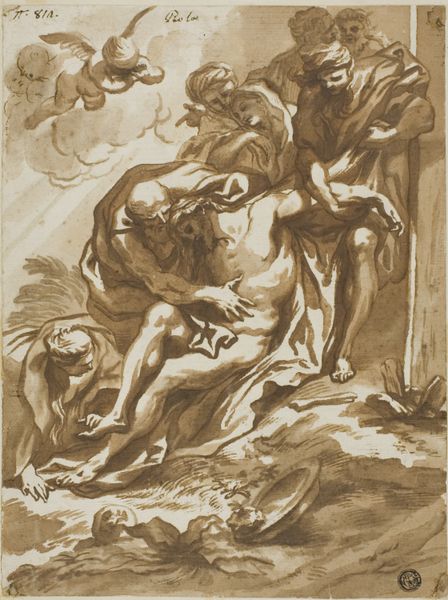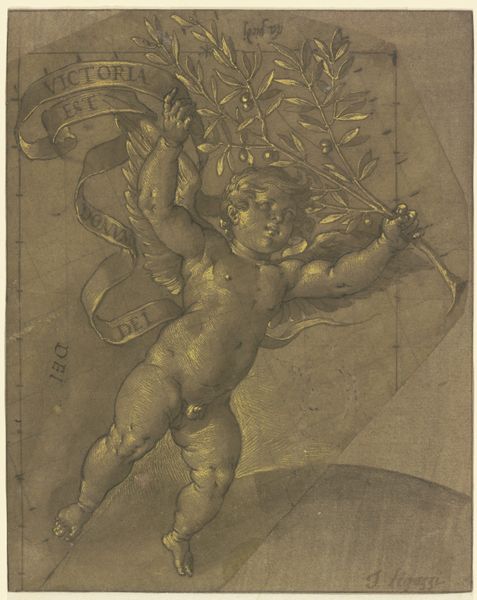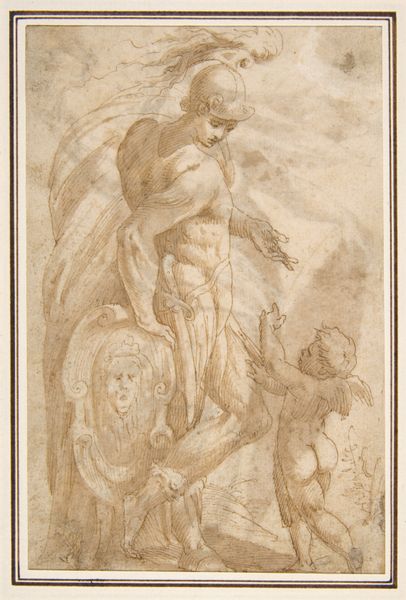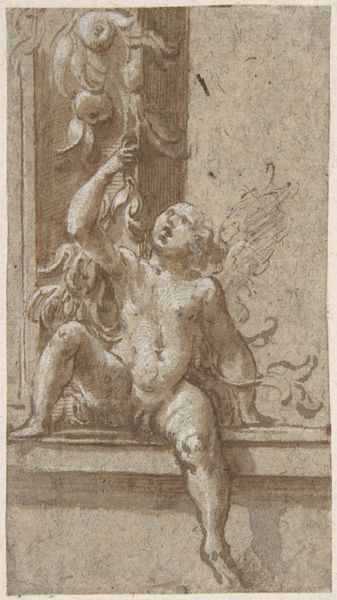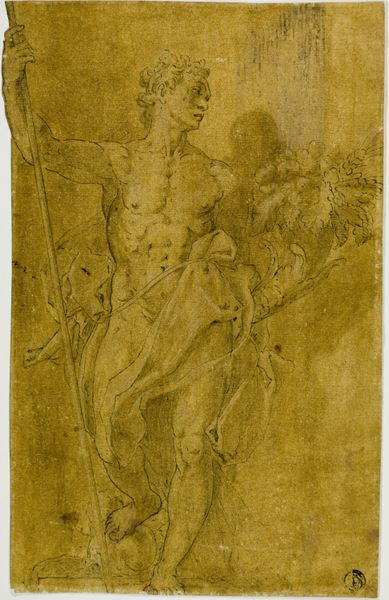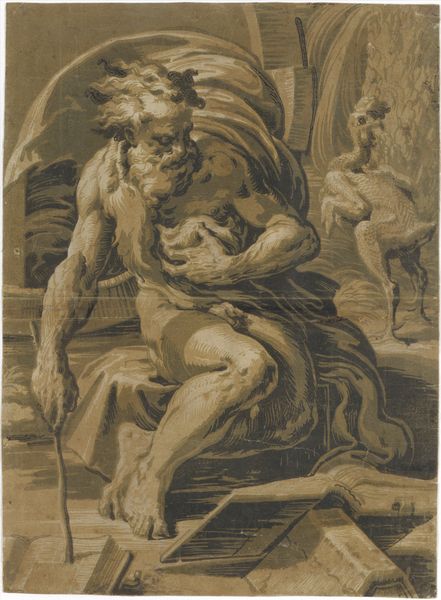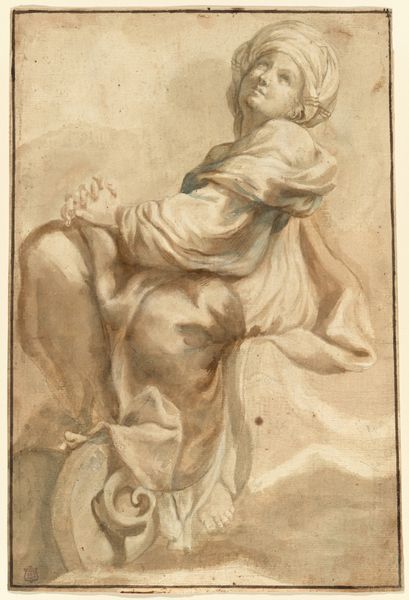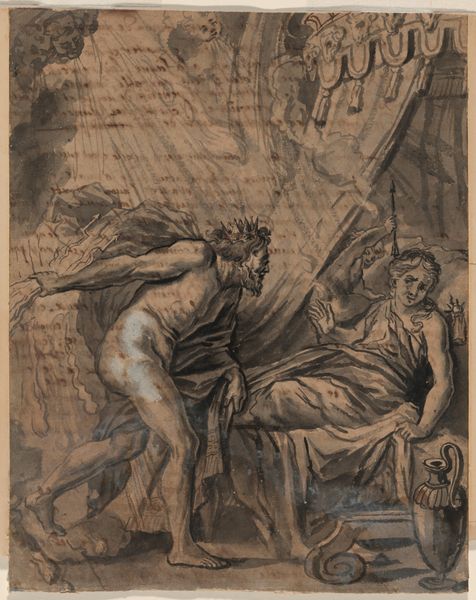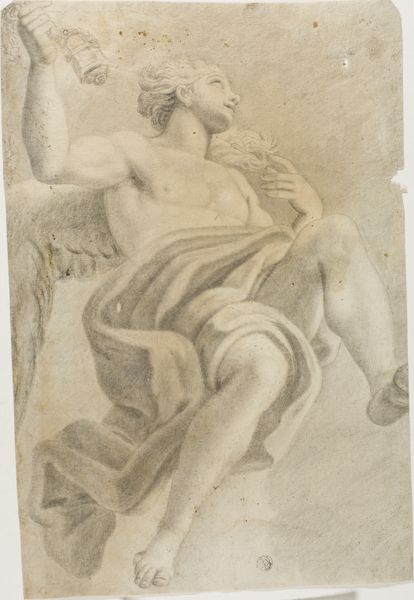
drawing, ink, indian-ink, chalk
#
drawing
#
high-renaissance
#
toned paper
#
pencil sketch
#
charcoal drawing
#
possibly oil pastel
#
charcoal art
#
ink
#
cupid
#
acrylic on canvas
#
coffee painting
#
underpainting
#
indian-ink
#
13_16th-century
#
chalk
#
portrait drawing
#
watercolor
Copyright: Public Domain
Paolo Farinati created this drawing of Sappho and Eros in the 16th century using pen, brown ink, and white gouache on brown paper. The choice of materials here is key. Farinati opted for a toned paper, allowing him to suggest form through contrasting dark lines of ink and highlights of white gouache. This economical approach allowed the artist to explore the composition and modeling of his figures without the labor and expense of a full-scale painting. Note the quick, confident strokes that define Sappho’s drapery and the cherubic form of Eros. Drawings like this were often made in preparation for larger works or as independent studies. They demonstrate the artist's skill and inventive capacity, and also served as valuable tools for teaching and studio practice. While traditionally seen as preparatory, such drawings reveal Farinati's mastery and the vital role of drawing in the Renaissance artistic process. They invite us to appreciate the skill and efficiency of the artist’s hand.
Comments
stadelmuseum about 2 years ago
⋮
The fact that the scene is depicted from below leads to the assumption that this drawing served as a study for the ceiling decoration of a palazzo. It portrays Sappho – the famous poetess of ancient Greece, servant to Aphrodite and authoress of hymns to the gods and poems of love – looking down from a cloud. Presumably on account of her amorous lyrics she is associated here with Venus and accompanied by a boy Amor armed with a bow. Farinati made few corrections as he developed the figure. Traces of the preliminary drawing of the unclothed figure are still to be seen in the area of the thighs, which the artist later draped with the cloth of the figure’s cloak.
Join the conversation
Join millions of artists and users on Artera today and experience the ultimate creative platform.
